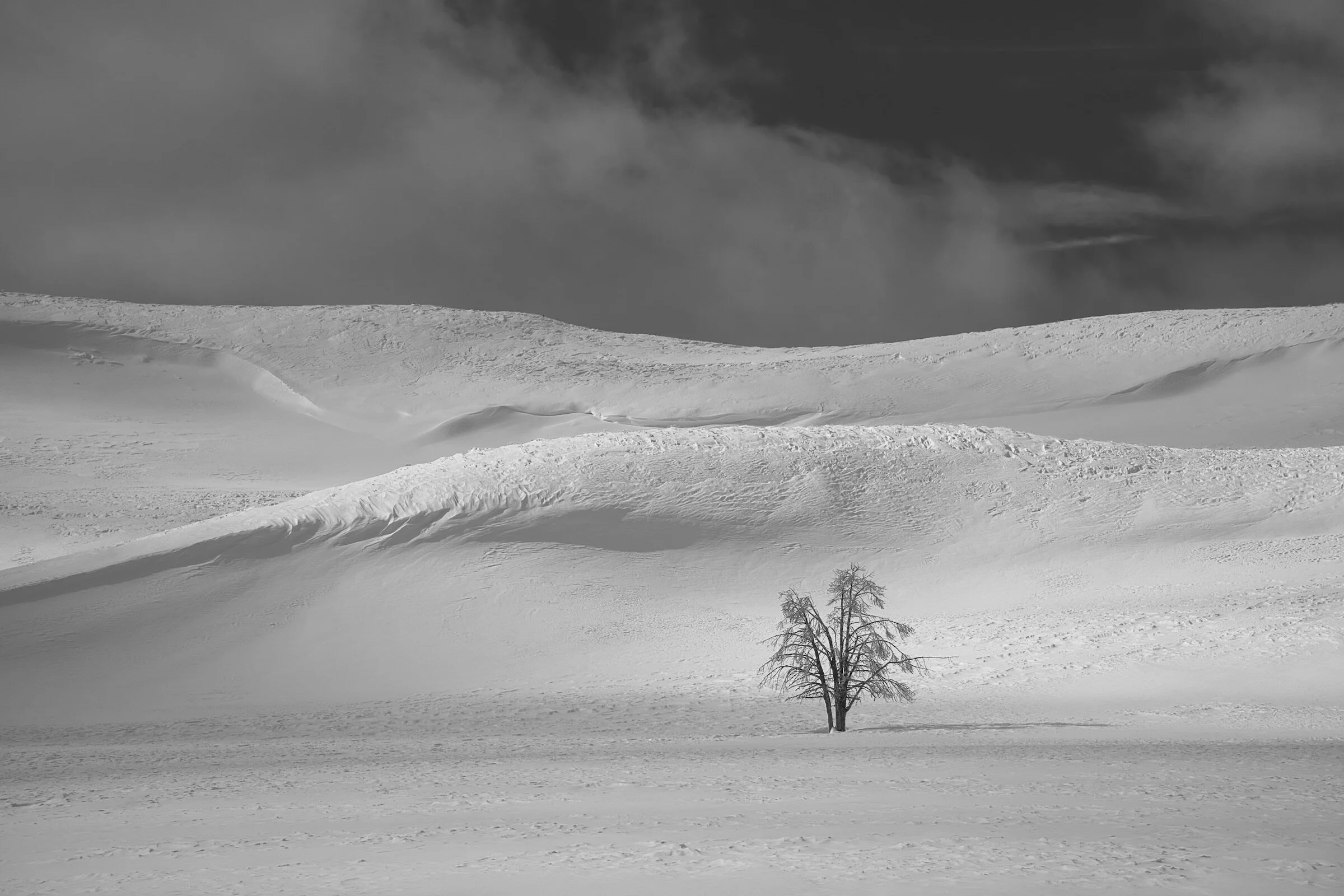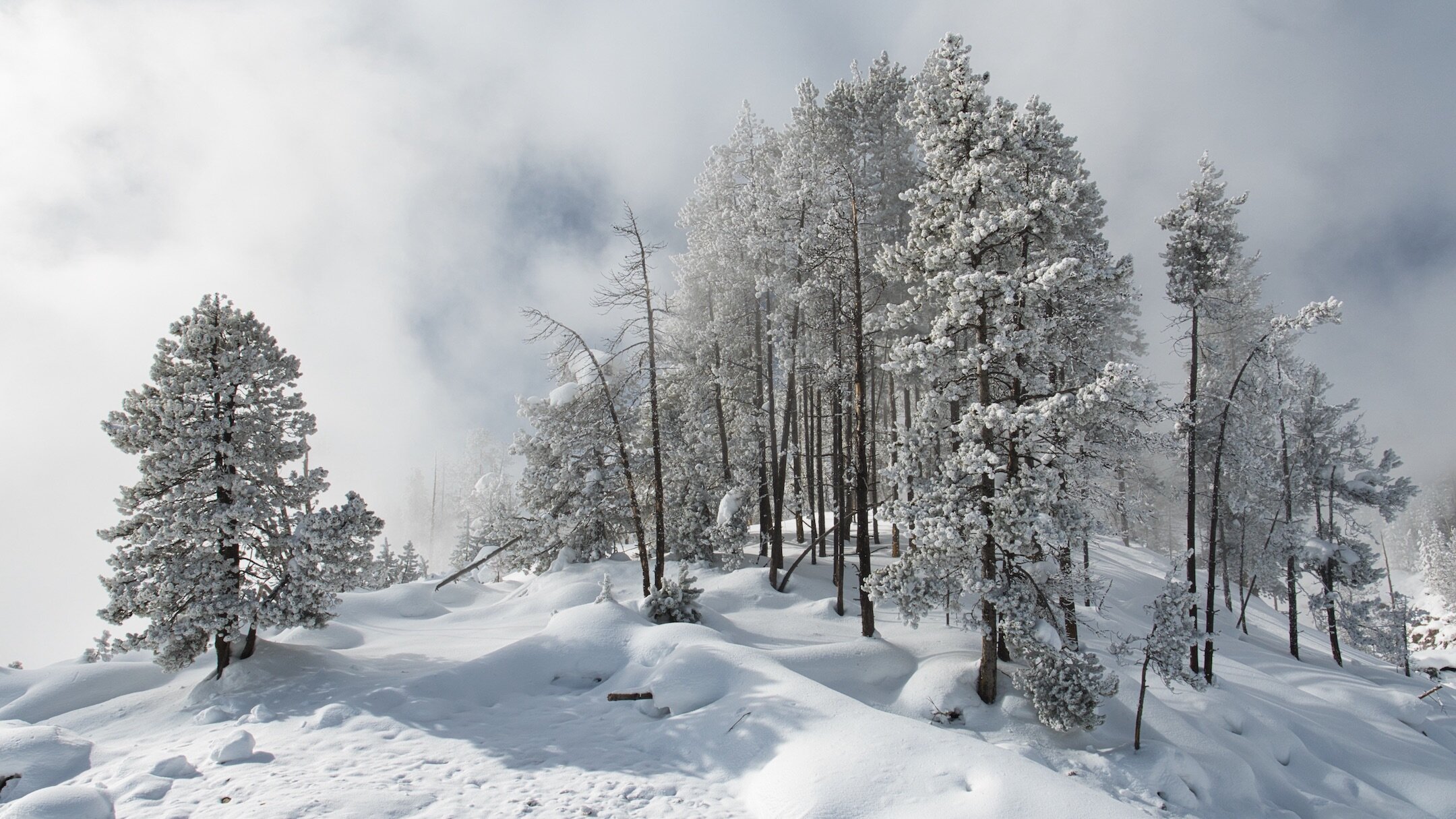The Miracle of Yellowstone in Winter
About 4 million visitors a year find their way to the crown jewel of America’s National Park System. If that sounds like a lot, I’ve got good news. First of all, it’s a pretty big park. (More on that later.) Secondly, only about 3% of those visitors are willing to brave the park in winter. So, if you want to avoid the crowds, winter is it. But winter in Yellowstone is so much more than that. It’s a complete transformation of an ecosystem, and a repainting of so many beautiful landscapes. To see Yellowstone in winter, in all of its harsh grandeur, is to appreciate the stark, raw power of nature in North America. It’s a reminder that we as Americans (and really as humans) are just guests here. Perhaps Thomas Wolf said it best:
Yellowstone is a fabulous country, the only fabulous country; it’s the one place where miracles not only happen, but where they happen all the time.
Although the only way to really appreciate Yellowstone is to set off on your own journey, I wanted to share a few of the miracles I saw during my own photography-focused visit to this “fabulous country”.
How it all works.........
Before I get to the good stuff, I’ll give you a quick overview of the logistical situation (in case you want to plan you own adventure). Yellowstone has two primary winter entry points: Gardiner, Montana and West Yellowstone, Montana. You can find lodging in both locations. West Yellowstone is more commercially robust and a majority of winter visitors use it as their point of entry. Both Gardiner and West Yellowstone are about a 90 minute drive from the Bozeman airport. I chose Gardiner for my visit and highly recommend The Ridgeline Inn for convenient location and reasonable prices. (NOTE: You can also enter the park in winter from Jackson, WY but its a much longer trip and probably not your best option if Yellowstone is your priority.)
The important thing to understand here is that with one exception, the only way to get into the park during winter is via licensed tour operators with special equipment that guide clients into two primary destinations: Grand Canyon of Yellowstone and Old Faithful. These are two separate itineraries. However, both itineraries will make stops along the way. So, for example, if you choose Grand Canyon, you may still have the opportunity to tour a thermal feature. (More on that below.) I highly recommend that you book both tours while you are there, because each gives you different perspectives on the park's landscapes, geology, and ecosystems. Keep in mind that these tours only operate from mid-December through early-March each year, so it’s a short season.
Official US Park Service Map
Note on the map above that in addition to placing stars on Gardiner and West Yellowstone, I have highlighted the road between Gardiner and Cook City in blue. This is the only road in the park that you can navigate with your privately owned vehicle in winter. It’s an extraordinary landscape taking you through the Lamar Valley. Its one of the main reasons I chose Gardiner over West Yellowstone (where the only option into the park is via tour).
For guided tours into the actual interior of the park, there are several licensed companies to choose from. I chose Yellowstone Vacations and I thought they were exceptional. They offer two modes of transportation. Snow Coaches are essentially vans or short buses running on tracks or special “fat tires” that allow the vehicles to travel safely on the deeply packed snow. If you’re like me and appreciate the luxury of a heated environment that you can retreat to between stops, then this is probably a good choice for you.
Our guide John Clark showing off his daily driver.
On the other hand, hardy souls can also choose to tour by snowmobile. Don’t worry, your tour company will provide you with all the gear you need to stay warm. (Honestly though, it made me cold just looking at them.)
Now on to the miracles of nature......
Yellowstone is huge at over 2,200,000 acres. It rests in three states (Idaho, Montana and Wyoming), but 96% is in Wyoming. Like much of the American west, you feel the vastness around you, and I think it forces you to reconsider yourself in new (and often humbling) ways.
The lonely tree. I think we all feel like the lonely tree from time to time.
You probably know that Yellowstone contains a huge caldera and has erupted with catastrophic results at least three times over the past 2.1 million year; with one about 1.4 million years ago, and one about 600,000 years ago. The USGS keeps a close eye on it and currently doesn't project any risk. However, it is one of the volcanic areas of the world that could conceivably produce a near extinction-level event.
Lone buffalo posing at Biscuit Basin
The upside of the the underground instability in the park is the plethora of thermal features. The 10,000 plus features include geysers, hot springs, mud pots, and fumaroles. Of course, we typically associate the park with its geyser features.
The iconic Old Faithful Geyser
Old Faithful is quite a blessing because its the only major feature at the park that you can count on consistently. Many of the park's geysers are much larger and more impressive, but have timetables that are mysterious even to the geologists who study them. Steamboat Geyser, for example, is the tallest active geyser in the world. Its been dormant for the last few years but has lately been putting on major shows when it feels energetic. (It chose not to entertain me during my visit.)
One of the colorful hot springs at Biscuit Basin
In the age of Instagram, we hear more and more about park accidents, and Yellowstone is no exception. People just don't want to stay on the boardwalks the way they used to. Every year, you read about a tourist (or two) who gave their lives (or at least a few weeks of their time in a burn unit) for that perfect social media image. Yellowstone is big, and cold, and has large animals that will eat you, if you don't fall into boiling water first. There are books about it if you care to read more. But fear not good reader. Following the instructions, and staying on marked trails will make for a safe journey.
Morning Chill
However cold you think its going to be, dress warmer than that. While still temperatures of 5 degrees on a sunny day are bearable, the wind can change everything in an instant. A windchill of -20 can make you wish you were back home. The good news is that if you don't like the weather, don't worry. It will change. The weather is constantly reinventing itself and the forecasts are seldom accurate. One of the things that makes the park so beautiful is the changing light. Our awesome guide John goes into the park day after day in his job, and tells me that he never sees the same landscape twice. Clouds, storms, and the range of light create a miracle of constant transformation.
Trees creating their own mysterious landscapes
While Old Faithful is certainly one icon of the park, its safe to say that another is the buffalo. With a current park population of about 4700, the buffalo are ubiquitous. Although I call them buffalo, they are actually Bison. Despite their ubiquity, they are majestic and resilient creatures, somehow surviving winter in this cold desolation. Weighing up to 2000 lbs, a fully grown male bison requires about 30 lbs of grass per day in order to survive the winter. Needless to say, almost every buffalo you see is digging into snow for patches of grass or moving to areas where they think more grass will be available. Many will not survive the winter, and over 40% of the yearlings will die.
Buffalo foraging under storm clouds
Speaking of animals, Yellowstone is home to the single largest concentration of mammals in the Continental United States. In addition to buffalo, visitors will see a variety of deer, elk, moose, and even wolves. Unlike buffalo, wolves typically keep their distance from humans and are usually observed best through binoculars or spotting scopes. There are currently over 120 known wolves in the park. If you make the drive from Gardiner to Cook City, you will almost certainly see enthusiasts with spotting scopes observing one of the eleven packs.
Bull Elk near Fort Yellowstone
This short visit to Yellowstone refreshed me and reminded me of the importance of protecting natural spaces. I recently attended a remotely presented lecture by a retired physician and friend describing the importance of spending time in nature. I think we all realize that being outdoors can refresh us, but it goes beyond that. It's not just conceptual. The scientific evidence is mounting. We are beginning to realize that access to green spaces is a health imperative. I like the Japanese word, shinrin-yoku (forrest bathing). We are fortunate to live in Northeast Ohio where we have an abundance of parks and protected areas.
The Yellowstone River
Despite the fact that most visitors make their way to Yellowstone in summer, these winter tours can fill up weeks or even months in advance. As with any travel, it's best to plan ahead, especially in regards to the limited lodging options. You may also want to make the most of your trip by visiting the adjacent Grand Teton National Park. (I'll cover this park in another post.)
View of the Yellowstone River off Highway 89 on the way back to Bozeman.
I hope you have enjoyed this selection of photos accompanied by my rambling thoughts. If you have questions about Yellowstone or other National Park destinations, don't hesitate to contact me. As always, thanks for reading.













